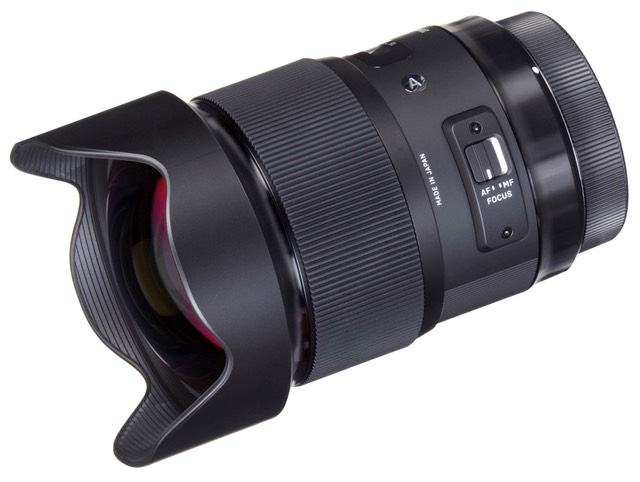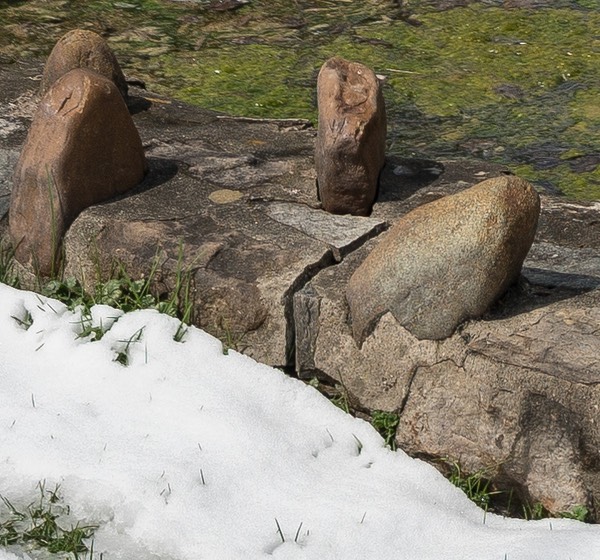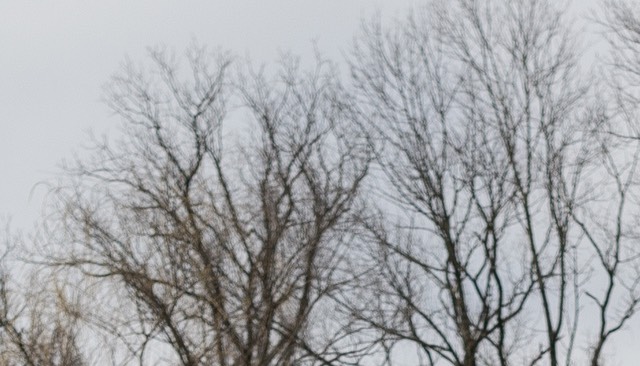
What is It?
The Sigma 20mm f/1.4 HSM Art is one of the recent prime lenses that show Sigma pushing into new arenas. We now have fast Art primes from 14mm to 135mm, and as you might have noticed, those are all getting lots of attention from the review sites and serious photographers.
If you remember Sigma from the old less-expensive-than-Canikon days, the whole Art initiative is a serious move upscale for Sigma. Build quality is better, optical quality is better, consistency in manufacturing appears better: this is not your father's Sigma.
20mm is still seriously wide, though not quite as much as the 14mm I also reviewed. The 20mm Art covers the full 24x36mm frame (FX for Nikon users) and corner to corner diagonally, that works out to about 94°, or about 20° less than the 14mm.
We can focus the lens down to about 11" (27.6cm). While that doesn't give you a massive magnification ratio in the near field, you're still going to get a lot of perspective impact using it up close to larger subjects.
Yet with it's f/1.4 aperture (goes to f/16), this lens doesn't need a lot of light.
Internally, the optical formula is complex for a prime: 15 elements in 11 groups, with 2 aspherical elements, 2 FLD elements, and 5 SLD elements. The front element is again a huge one, with the typical "bubble" effect you see with the really wide lenses. So bubbly, in fact, that you get a slip-on lens cap that goes over the built-in petal hood, and no filter rings. Unlike some recent slip-on caps, the one for this Sigma does not have indents or catches to hold it in place. Instead, a slight bit of felt around the inside rim is supposed to be the friction that holds it in place. I'm not sure that's going to wear well.
When I took the lens out of the box, my first thought was "what would Galen think." Galen Rowell was someone I photographed around the world with and well known for the fact that he mostly used a 20mm lens. In his case, a very small and light 20mm f/4 Nikkor.
The Sigma 20mm is massive: 5" long by more than 3.5" round (129.8mm x 90.7mm), and 33.5 ounces (950g). That's two pounds sitting out front your camera body. Galen's Nikkor was 1.5" long and weighed in near 7 ounces (209g). I think his jaw would have dropped on opening up a Sigma box, and he would have been in a state of shock for a moment. He thought his 20mm was heavier than it needed to be.
The lens goes from near to far focus in a bit less than a quarter turn of the focus ring. There's a distance scale, and it's marked for DOF at f/8 and f/16. I did some back calculations: as usual, we don't have a lens marked correctly. If you're going by the Zeiss formula, the CoC should be 0.025 for full frame. It appears that once again the Japanese are rounding that off to 0.03. So be careful about assuming that the DOF scale is all you need to assess focus.
On the side of the lens is a AF/M switch. Focus ring. One switch. That's about it externally.
The lens is compatible with the Sigma USB dock, and lenses bought in one mount can be switched to another by Sigma service for a fee.
Source of the tested lens: B&H loaner
The lens is made in Japan, available in Canon EF, Nikon F, Sigma SA, and Sony FE mounts, and retails for US$899. Curiously, Sigma has now started labeling lenses with the year in which they were born. My sample is from 2015.
How's it Handle?
In a word, heavy. It seems that's the price we pay these days for something new and unique, and I'm reviewing a lot of heavy gear lately. The Sigma 20mm f/1.4 Art reminds me a bit of the Nikkor 105mm f/1.4. On a DSLR you end up with almost four pounds in your hand, and that's a bit front-heavy with a fairly wide barrel out front.
So work out with weights.
Other than that, there's not much to say. The focus ring was smooth, the focus switch stiff, pretty much the way you want them.
How's it perform?
Focus: This is an HSM lens with an internal focus motor, and it's relatively quiet and fast. In a very close near to extreme far focus pull there's a brief slide to the focus point, but I judge that to be faster than the Nikkor f/1.8 prime. I did some basic 3D tracking tests, and at least out to the very extreme column on my D850 the lens does well keeping a face in focus (wait, the D850 does face detect focus? Yes, haven't you been reading my reviews and books?). Generally, wide angle lenses aren't problematic in focusing, as they don't move elements very far, and the Sigma seems to work as I'd expect in this regard.
Sharpness: Like the 14mm f/1.8 Art I also tested, this lens holds up as sharp with the high megapixel count cameras, at least in the center of the frame. It hits top sharpness by f/2 in the center, and that's got excellent snap to the acuity. More so than the 14mm, the 20mm falls off from the center more rapidly. By the rule of thirds points I'm seeing the lens lose it's incredible center snappiness and just really very good until I stop down to at least f/4. Even then, I've seen better from other lenses.

D850 crop from area just off the most central region (entire shot, below). Focus is just starting to lose a bit of acuity here, but is still good. It's really at the extreme edges and corners that we see issues.

The corners are poor at f/1.4, there's just no other way to describe it. Even at f/2 I'd call them poor. You really have to get to f/4 to get "usable" corners, and on the high megapixel count cameras I'd just call them good at best. I've seen others characterize this lens as very good in the corners at f/4, but I can't agree with that on my D850. On my D5, sure, but you're not pressing the optical chain nearly as much at 20mp as you are at 45mp.
As with the 14mm, this brings up the question of who this lens is for? At f/8 for landscapes, it's decent, but you don't get that popping-in-contrast central area as you do from f/2 to f/5.6. To put it in perspective, the very center of the lens as sharp at f/1.4 as it is at f/8 in MTF tests (though beware that this is measured at a reasonably close distance, not landscape distances; I don't have a test chart big enough I can use for 20mm at long distances ;~). Indoors event shooting at f/1.4 you're going to get a modestly wide capture area with a very good center, but be very careful about what's in the corners, as they will appear very soft compared to the center. Thus, this isn't a lens you use for architecture (short of lighting the rooms and stopping down). People? Maybe, but keep them and important things to have sharp out of the corners.
Overall, I was a little disappointed in this lens. It just feels like its struggling more than the 14mm f/1.8 to achieve really great results outside the center. While the Sigma gives me a bit more snap in the center in some of the range, I actually like the Nikkor 20mm f/1.8G better than this Sigma overall. The corners are better, even wide open.
Someone asked me to show "smearing." Okay, I'm going to do this with out of focus samples from the above image:

Note that this sample from near the center is showing lack of acuity because it's outside the depth of field (especially when looked at close like this). This is the way I often shoot landscapes: with the near in focus and the far going soft (we're at f/4.5 here). That's a cue that our eye/brain accepts as "depth." But I want that out of focus area to be well controlled and still showing a high level of detail integrity. It just won't have sharp edges. The Sigma is doing just what I want in this central region.

Over in the corners that integrity has completely broken down. These trees are actually closer to me than the ones above, yet even the small branches are smearing outwards from their center to create distinct blur. that is masking any recorded detail. Indeed, the smear is large enough that small branches here are "wider" than the same-sized branches in the above example.
Linear Distortion: Linear distortion, as you'd expect from an extreme wide angle design measures in with significant barrel distortion of about 2.5 percent. That's high enough that you'll want to correct it. I was able to easily correct most of the distortion with simple tools to the point of invisibility.
Vignetting: Wide open, we're measuring in at over three stops! So not only are you getting poor sharpness wide open in the corners, they're dark. Vignetting drops to about one stop at f/2.8 and is basically ignorable past that (just to repeat, my threshold here tends to be about a half to two-thirds of a stop for ignorable, measured at the corner).
Chromatic aberration: Surprisingly low for such an extreme design. On my D850 I'm seeing not even seeing a pixel's worth of lateral aberration across the full aperture range, and almost no variation. Longitudinal chromatic aberration is present but not as extreme as I'd expect, and it pulls into control with a bit of stopping down.
Bokeh: Everyone wants to know about bokeh with fast lenses. There's a bit of color at the blur circle edge, and a little bit of onion skin: not nearly as much as I was expecting. But two things stood out: the aperture diaphragm wasn't symmetrical at about f/2.8 (it was at f/5.6) and the corner out of focus regions show clear spherical aberration (part of the corner smearing problem). You're not going to complain about the bokeh, but you're not going to rave about it, either.
Final Words
Simply put, you really need exceptional center results at a fast aperture to want this lens. Even then you'll want to use it at f/2 to get the most you can in the light-versus-sharpness balance. Which almost immediately brings me to the Nikkor 20mm f/1.8G. Smaller, lighter, and optically better behaved at the apertures I'd tend to use for landscapes, architecture, etc. I'm not seeing a reason why I personally would want a heavier, larger lens, but if you really need that f/1.4 and you need it for a broad central region that's got excellent acuity, then the Sigma may be the lens you're looking for.
The thing that saves this lens is its price. At US$900 it's only US$100 more expensive than the f/1.8 Nikkor. For that you get a faster lens that is, when measured carefully, optically better at the center, at least up until you're in the diffraction zone. Some people will want that, and it's not a bad price penalty to get it. Often, the f/1.4 primes sit at prices so far above the more modest optics that it's really tough to justify springing for them. That's not so true here.
Recommended (2018 to present) (but not where corners need to be rendered well).